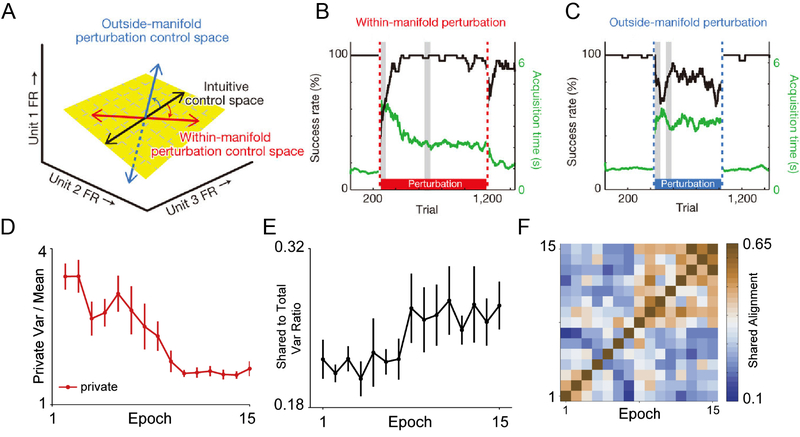Figure 4.
BMIs shed light on learning mechanisms within and among sessions. A) Within a single day, M1 neural activity during BMI use was largely confined to a low-dimensional, intrinsic neural manifold (yellow plane) within the total neural space (represented here schematically as three-dimensions of single unit firing rates, FR). The intuitive control space is represented as the black line. BMI decoders were then perturbed such that the control space still lay within the neural manifold (red arrow) or outside the neural manifold (blue arrow). B) Task performance during one representative within-manifold perturbation session shows rapid, successful learning of the new BMI decoder. Black line, success rate; green line, time to acquire the target; both are relative to the performance with intuitive BMI mapping. Dashed lines represent onset and offset of the perturbation. Grey vertical lines represent 50-trial bins used to determine initial and best performance with perturbed mapping. C) Task performance during one representative outside-manifold perturbation shows little learning during the session. D) Athalye et al. (2017) explored learning of new BMI decoders across days. As BMI performance increased over days, private variance decreased, while shared variance increased (E) and the intrinsic manifold increased its alignment and became more stable (F). (Figures A,B and C modified with permission from publisher from Sadtler et al., 2014.; Figures D and E modified from Athalye et al. 2017 with permission from publisher.)

